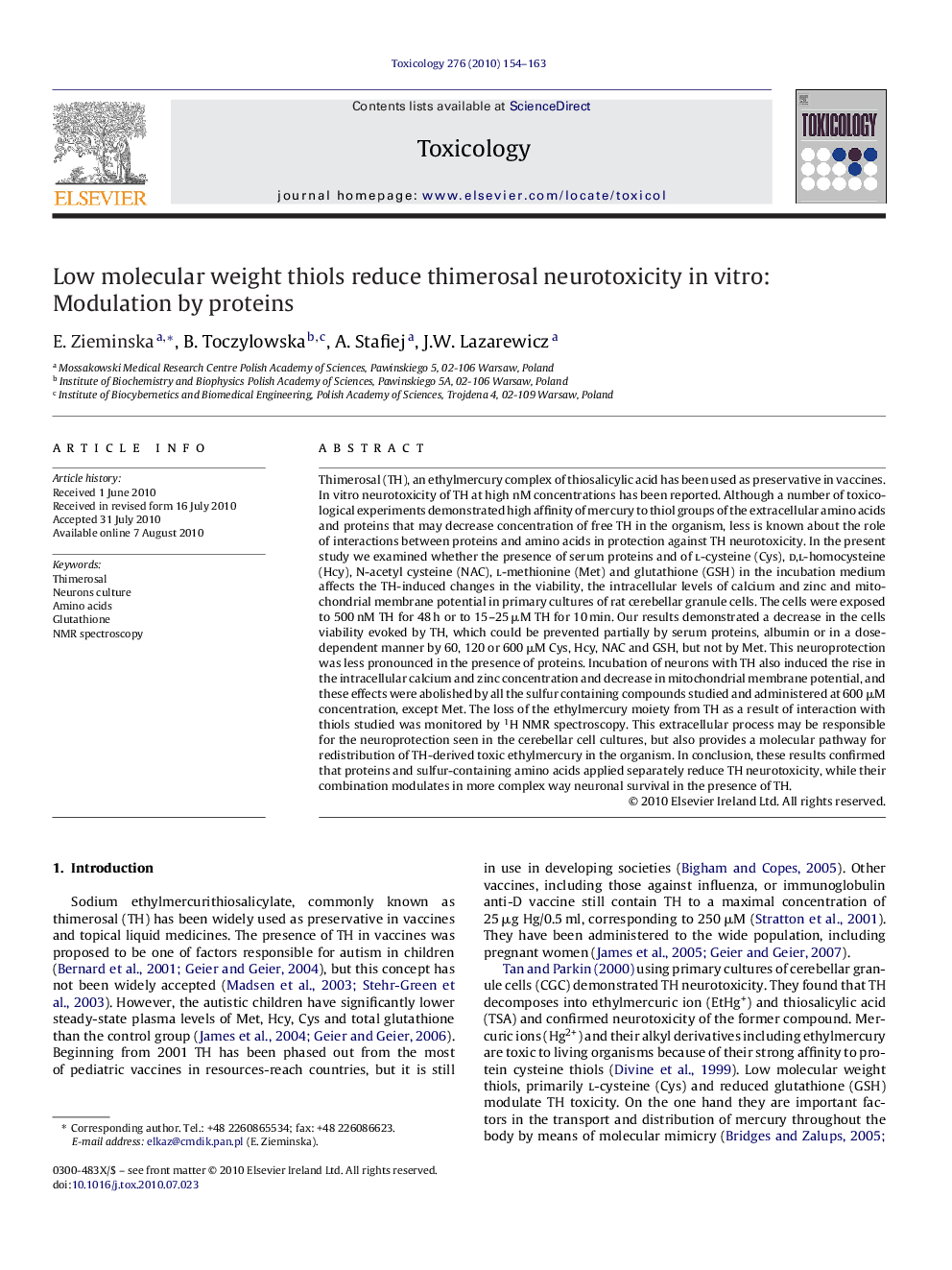| کد مقاله | کد نشریه | سال انتشار | مقاله انگلیسی | نسخه تمام متن |
|---|---|---|---|---|
| 5859672 | 1132520 | 2010 | 10 صفحه PDF | دانلود رایگان |
عنوان انگلیسی مقاله ISI
Low molecular weight thiols reduce thimerosal neurotoxicity in vitro: Modulation by proteins
دانلود مقاله + سفارش ترجمه
دانلود مقاله ISI انگلیسی
رایگان برای ایرانیان
کلمات کلیدی
موضوعات مرتبط
علوم زیستی و بیوفناوری
علوم محیط زیست
بهداشت، سم شناسی و جهش زایی
پیش نمایش صفحه اول مقاله

چکیده انگلیسی
Thimerosal (TH), an ethylmercury complex of thiosalicylic acid has been used as preservative in vaccines. In vitro neurotoxicity of TH at high nM concentrations has been reported. Although a number of toxicological experiments demonstrated high affinity of mercury to thiol groups of the extracellular amino acids and proteins that may decrease concentration of free TH in the organism, less is known about the role of interactions between proteins and amino acids in protection against TH neurotoxicity. In the present study we examined whether the presence of serum proteins and of l-cysteine (Cys), d,l-homocysteine (Hcy), N-acetyl cysteine (NAC), l-methionine (Met) and glutathione (GSH) in the incubation medium affects the TH-induced changes in the viability, the intracellular levels of calcium and zinc and mitochondrial membrane potential in primary cultures of rat cerebellar granule cells. The cells were exposed to 500 nM TH for 48 h or to 15-25 μM TH for 10 min. Our results demonstrated a decrease in the cells viability evoked by TH, which could be prevented partially by serum proteins, albumin or in a dose-dependent manner by 60, 120 or 600 μM Cys, Hcy, NAC and GSH, but not by Met. This neuroprotection was less pronounced in the presence of proteins. Incubation of neurons with TH also induced the rise in the intracellular calcium and zinc concentration and decrease in mitochondrial membrane potential, and these effects were abolished by all the sulfur containing compounds studied and administered at 600 μM concentration, except Met. The loss of the ethylmercury moiety from TH as a result of interaction with thiols studied was monitored by 1H NMR spectroscopy. This extracellular process may be responsible for the neuroprotection seen in the cerebellar cell cultures, but also provides a molecular pathway for redistribution of TH-derived toxic ethylmercury in the organism. In conclusion, these results confirmed that proteins and sulfur-containing amino acids applied separately reduce TH neurotoxicity, while their combination modulates in more complex way neuronal survival in the presence of TH.
ناشر
Database: Elsevier - ScienceDirect (ساینس دایرکت)
Journal: Toxicology - Volume 276, Issue 3, 29 October 2010, Pages 154-163
Journal: Toxicology - Volume 276, Issue 3, 29 October 2010, Pages 154-163
نویسندگان
E. Zieminska, B. Toczylowska, A. Stafiej, J.W. Lazarewicz,